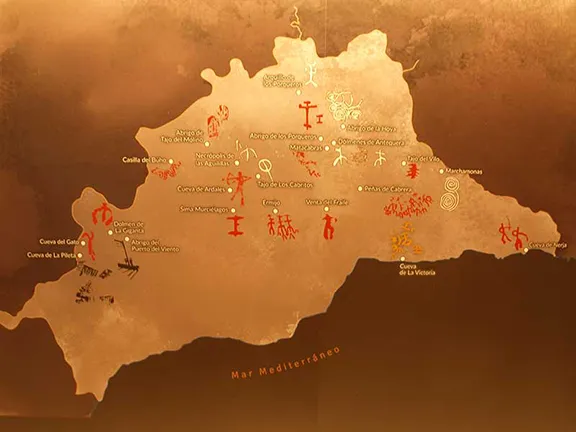The Museum of Málaga combines Málaga Archaeological Museum and the Museum of Fine Arts in the neoclassical Palacio de La Aduana
By Nick Nutter | Updated 15 Sep 2022 | Málaga | Museums |
Login to add to YOUR Favourites or Read Later


Palacio de La Aduana Malaga
Following over 10 years of renovation the Málaga Museum re-opened its doors in the Palacio de La Aduana on the 12th December 2016. The project cost upwards of 40 million Euros and I was intrigued to see if it was worth it.
The Museum of Málaga combines two museums, the Málaga Archaeological Museum and the Museum of Fine Arts. It is now housed in an imposing neoclassical building modeled after Italian Renaissance palaces. Originally built as a customs house the building became the royal tobacco factory in the late 19th century. During the Franco era the palace served as the seat of the city council and in the 1980s it became an office for the sub delegation of the Spanish Government in the province of Málaga.
The museum is divided into three parts on three floors, the top floor deals with the regional history from prehistoric times until modern times. The first floor contains over 300 works of art by primarily 19th century artists and members of the Málaga School of painting including Jose Morreno Carbonero, Antonio Munoz Degrian and Bernardo Ferrandiz. The ground floor houses a cafe, shop and space for temporary exhibitions. All the information displayed is in Spanish and English.
I liked the way the pieces on display had been grouped together to relate a story rather than just a dry pot shard in a sterile cabinet with a dusty label informing you it was from a tomb and dated to whatever year BC. Three examples will suffice.


Cave Paintings in Málaga province
Cave paintings proliferate in Málaga province. Its caverns contain thousands of painted and engraved images from the Paleolithic period, the largest concentration of art from that period in the Mediterranean. Most people know of La Pileta cave near Benaojen and the caves at Nerja, both open to visits, but did you know of cave art at Ardales, La Victoria, Higueron, Tesoro, Navarro, Calamorro, Gato, Pecho Redondo and Las Vacas caves? The art is studied in situ by experts from all over the world however at Málaga museum they have recreated much of the art as authentically as possible in artificial caverns that replicate the sections of the caverns in which the paintings and engravings are found. You can see how the rock form was used to enhance the painting for instance. Display boards show the development of the art through the millennia and the various interpretations made by academics since.


Part of the Loring collection - Museum of Malaga
A nice story, told in photographs, drawings and artefacts ties the local society into the history of the museum itself. During the mid 19th century Jorge Loring Oyarzabal and Amalia Heredia Livermore, the Marquis and Marchioness of Casa-Loring amassed an enormous collection of Roman statuary, much of it from archaeological sites in the province. The collection was displayed at their estate, La Concepcion, just outside the city. The estate was eventually sold and some of the smaller pieces were sent to the Provincial Archaeological Museum of Málaga when it opened in 1947. La Concepcion is now a botanical garden, open to the public. Many years ago, when I first visited the gardens, I wondered if the Roman statuary scattered about near a pavilion was authentic or not. Now I know.


Himmler's visit to Spain 1940 - Museum of Malaga
The third example is a surprising series of displays that really make you think, which is what a good museum should do. It looks at how ideology has, at certain times, influenced the course of history and archaeology and explains how a bunch of bones from Segovia ended up on display at Málaga.
General Franco was determined to prove an Aryan heritage for the Spanish people to improve his political ties with Germany. In 1940 Heinrich Himmler was due to visit Spain. Franco ordered the Visigothic Necropolis of Castiltierra at Segovia to be excavated and the ‘Aryan’ bones be distributed to museums throughout Spain so that those museums could explain the ‘official’ version of history.
During the excavation gold and bronze artefacts were found that, along with hundreds of the bones, were handed to Himmler’s staff who took them back to Germany for further study. In 2016 Spain requested the return of those artefacts so that they could be displayed at Madrid's National Archaeological Museum.


3rd century BC hoard found at Cerro Colorado - Museum of Malaga
So, was it worth it? Definitely, the Museum of Málaga is one of the best museums I have visited in Spain.